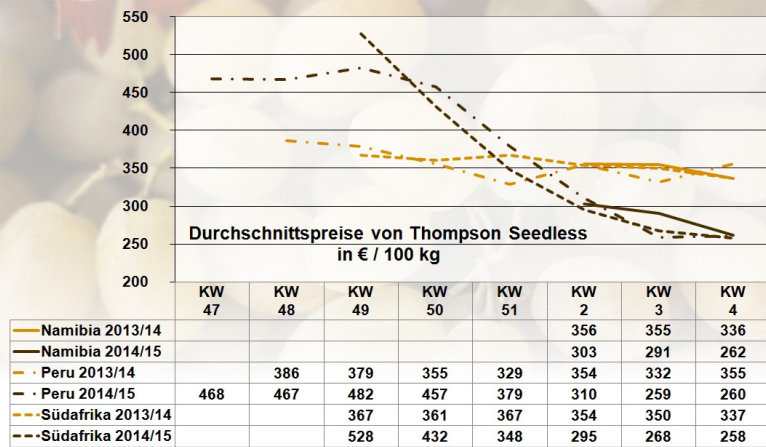
Consumption
According to the German fruit trade association Fruchthandelsverband, the average daily intake of fruit and vegetables in Germany has plateaued at 250g per person – just over half the recommendation daily intake of 450g. Given the per capita intake in Mediterranean countries is 700g a day there is obviously room for expansion in German fruit and vegetable consumption. While the ‘5-a-day’ campaign has drawn attention to the importance of eating ample fruit and vegetables, research published by Germany’s federal health journal Bundesgesundheitsblatt shows just 15.1% of women and 7% of men in Germany adhere to this recommended quantity. And while Germans seem to eat more fruit as they get older, vegetable intake appears fairly constant across all age groups.
Popular fruits include apples, bananas and oranges, while tomatoes, carrots and cucumber are the top three vegetables purchased. Local products on the rise Strong consumer preference for local produce is another feature of the German market. Taste and freshness are the most important reasons for consumers to buy local. In fresh produce in particular, consumers value quality over price where regional products are concerned. A recent study by the consulting firm AT Kearney shows local produce is not just a once in a while purchase for the country’s shoppers.
Last year, more than 80% of Germans bought local products on a monthly basis (up from 72% in 2013). Furthermore, more than 60% did so on a weekly basis (up from 48% in 2013). Locally–produced goods are mainly recognized by the packaging or the labelling. Regional products are usually sold from weekly markets or directly from organic farmers (46%), small supermarkets (44%) and from large supermarkets (42%).
Retail market saturated
Discounters are among the most successful retail formats in Germany. But, as Germany’s food retail newspaper Lebensmittelzeitung signals, based on November 2014 data, the market for price–focused formats in this country seems to have become saturated.
Opportunities in online food delivery While the German retail market is stagnant – growth is only keeping pace with inflation – and becoming saturated, the market for web-based food delivery services is nascent. Though now a niche with just a 0.6% share of the total food market, it has a clear upward tendency, according to market research firm Dr. Grieger & Cie, which expects turnover in this sector to grow by 44% this year.
Imports
Since Germany’s fresh produce production only partly meets its demand, many imports are needed. Fresh produce imports increased to €12.736 million in 2013, with fruit imports increasing more than vegetables. The majority of fresh produce imports are sourced from other European Union member states, with the Netherlands, Spain, Italy, Belgium and France the main suppliers.
Exports
In line with being a net-importing country, Germany exports far less fresh produce than it imports, though its exports are increasing. Between 2011 and 2013, the value of fresh fruit and vegetables exports rose to €2.46 billion. The value of vegetable exports is lower than that for fruit but growing faster.
MW
This is an abbreviated version of an article which appeared on p38 of edition 135 of Eurofresh Distribution magazine. Read the full article for free here.

